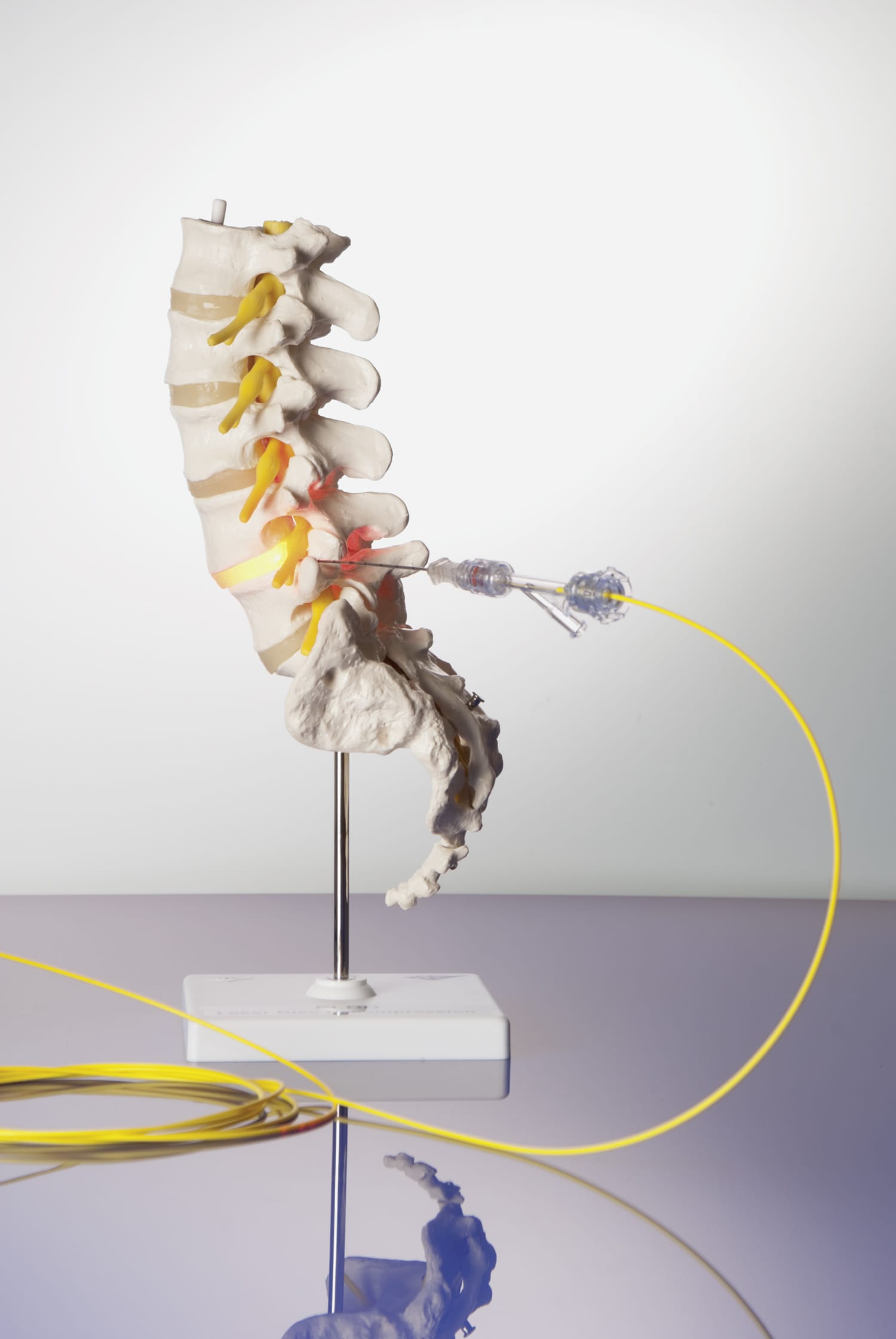Percutaneous Laser Disk Decompression
PLDD
Successful therapy with Radimed laser fibers and the 980nm diode laser
When correctly indicated, PLDD is a modern, minimally invasive procedure for the treatment of non-sequestered disc herniations in the cervical and lumbar spine after unsuccessful conservative therapy.
Principle of action
The pain therapeutic effect of intradiscal laser therapy is based on the following aspects:
Denervation of pain receptors within the annulus fibrosus resulting from neovascularization in degenerative and inflamed intervertebral discs.
Further effects:
- Shrinking, i.e. shrinkage of all intervertebral disc parts due to heat
- Solidification in the motion segment through laser-stimulated non-specific scar tissue formation through collagen structure changes
- Effect on inflammatory mediators intradiscal, pre- and postganglionic
Examples of indications
- chronic, discogenic vertebral pain syndrome with radicular or pseudoradicular symptoms
- Protrusion of an intervertebral disc in the cervical or lumbar spine area
- Prolapse of an intervertebral disc in the cervical or lumbar spine without rupture of the annulus fibrosus
Contraindications
- free disc sequester within the spinal canal
- complete rupture of the annulus fibrosus
- Criteria for non-discogenic pain
- progressive neurological deficits with axonal motor deficits
- The products are not intended for use on the central nervous system.
TRAINING
Our employees will instruct you on how to handle the products using standard protocols.
Physical effects
Laser systems mainly mentioned in the literature in connection with PLDD:
Nd:YAG solid-state laser with 1024nm wavelength – large penetration depth with strong thermal effects
Ho:YAG solid-state laser with 2100nm wavelength – very low penetration depth with only local thermal effects
Diode laser (semiconductor laser) with 980nm wavelength as optimal
Solution between penetration depth and thermal effects
Medical devices –
everything from one source
All the components required for PLDD are offered. Access to the intervertebral disc is possible via a 21G or 18G fine needle with a length of 15 cm (20 cm available on request). A fiber optic fixator is offered to fix the laser fiber, which prevents the laser fiber from accidentally slipping within the fine needle.
Many years of experience
A continuous development of the procedure since 1986 is demonstrated by a large number of experience reports and studies in the literature and leads to the fact that modern, highly efficient diode laser systems (980 nm) are now increasingly being used in PLDD.
Advantages
- minimally invasive percutaneous
access from 0.8mm - local anesthesia or light analgosedation, thus less painful
- can be performed on an outpatient basis
- no risk of scarring
- short convalescence period with short period of incapacity for work
- repetition of therapy possible



